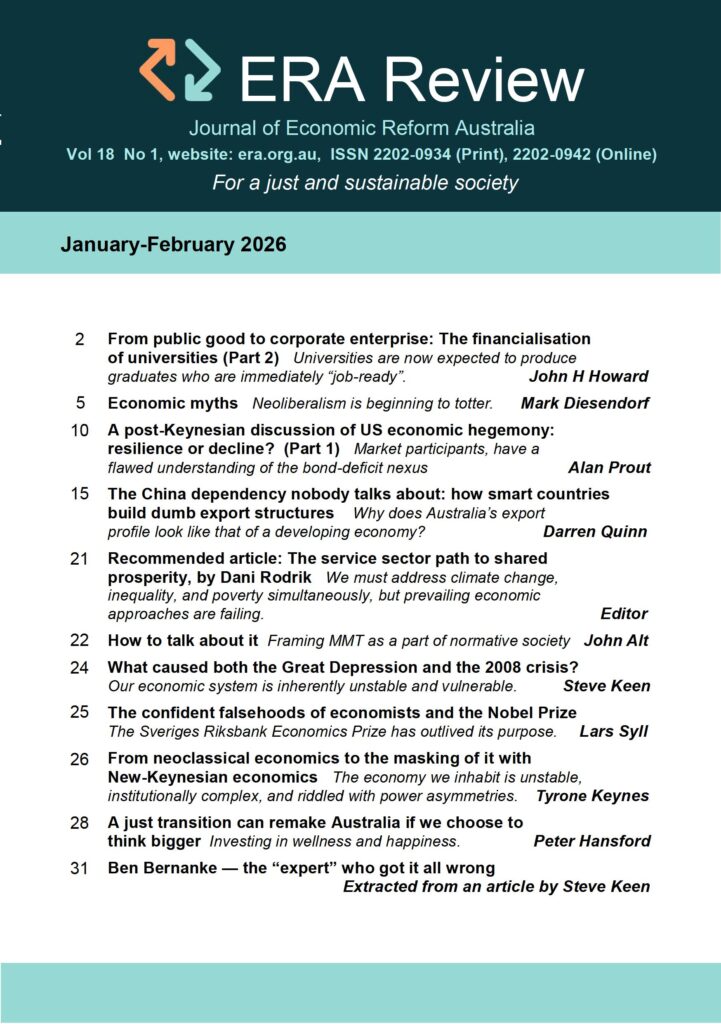We state our views and answer some frequently asked questions below.
Contact us if you have further questions or comments.
The overwhelming part of the money supply is credit money created by commercial banks. Coins and banknotes created by central government agencies make up only 3% of the money supply. Bank deposits in the central bank are another form of credit money, but this is inaccessible to the public.
Banking, and the creation of new money by banks, matter because they contribute to the public’s purchasing power and to the private sector’s economic performance.
Banks do not on-lend the deposits of credit money held by their retail customers, nor do they on-lend any of their reserves to their retail customers. The basic reason why they do not on-lend deposited retail funds is that such money is an asset of each depositor. However banks holding more reserves than they need for their business activities do on-lend their excess reserves to other banks.
The ability of a commercial bank to lend is largely determined by its net worth (equity capital) in relation to its risk-weighted financial assets, and not by its reserves. This assumes that the bank is willing to lend and the public are willing to borrow. In practice banks lend first, and look for the regulatory reserves they need later (if necessary by borrowing reserves from other banks or from the central bank).
Any bank credit money involved in such a payment is simply removed from the money supply (i.e. it is destroyed). The financial system as a whole is engaged in an ongoing process of creating and destroying credit money. In payment transactions of this type, only the reserves which tag along with the bank credit money are retained within the financial system.
Governments allowed and effectively encouraged asset bubbles to develop, particularly those associated with private housing, and banks were permitted to lend without adequate credit checks to those unable to service those loans over the longer term. Such asset bubbles eventually burst, followed by debt deleveraging and economic contraction.
Only if misused. In a normal situation, if there is low consumer demand, high unemployment or under-utilisation of people and resources, then an increase in government spending will improve the economy and will not be inflationary.
No. On the contrary, increased government spending generates private sector income, which in turn generates employment.
No. Federal government deficit budgeting is good for the economy because it adds to private sector savings and to private investment. On the other hand, a federal government surplus is bad for the economy because it withdraws purchasing power from the private sector.
Emphatically not. If a country issues its own currency and operates its own central bank then it can’t never run out of money and can never go bankrupt. Not a theory, a simple fact.
Those who think this happens are standing truth on its head, as the truth is the exact opposite. Budget deficits usually arise as a counter to recessions, high interest rates and high unemployment. Some mainstream economists have asserted that government borrowing leads to higher interest rates because it tends to “crowd out” private sector borrowing. However there is ample evidence that a crowding out effect does not apply to most government borrowing.
Not necessarily, as independent government services are necessary to provide a dispassionate and equitable basis for the functioning of society, including essential social services and business activities (including legal frameworks, quality standards, public health, rules of engagement, etc.). Moreover, there is a case for taking some private operations, including “too-big-to-fail” companies, into public hands – in order that they will not act as self-interested cartels, inflicting damage on the rest of society.
Hence the perception that private enterprise is inherently more efficient. Today, privatisations all too often lead to the outsourcing of the internal bureaucracy to the detriment of the customer with greatly increased costs.
Not for the income. As foreign currency cannot generally be used in our economy, Australian dollars have to be created to match the foreign currency submitted. This internal money creation can be done without cost at any time, so the main financial advantage is the receipt of foreign currency reserves that can be used in the future. There is also an economic advantage of foreign investment — the injection of foreign expertise that might otherwise have to purchased.






























